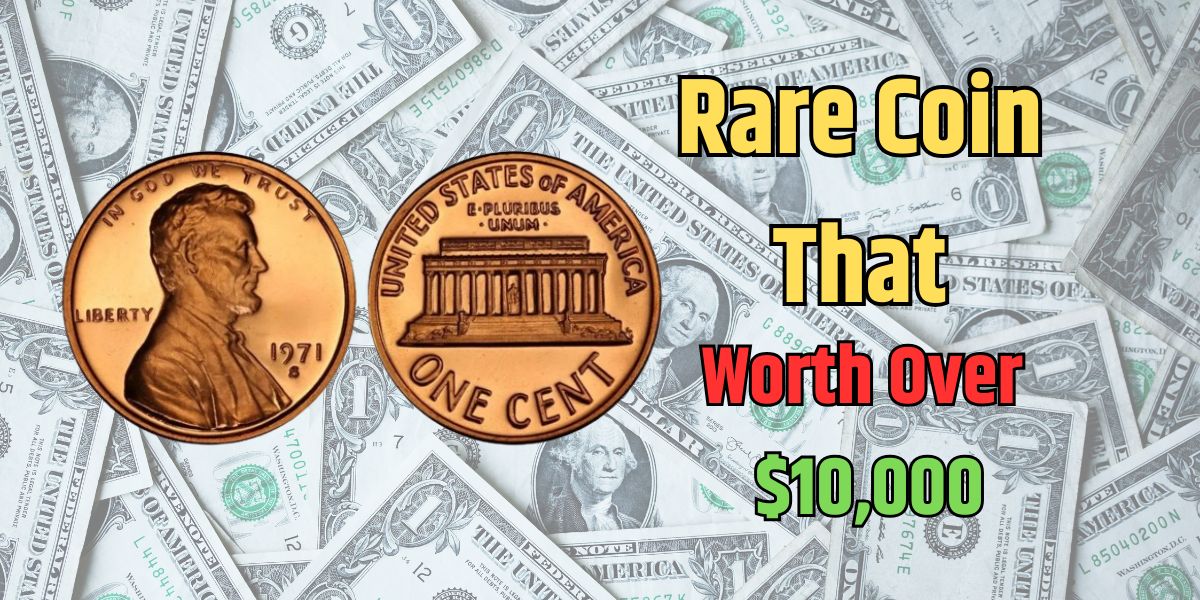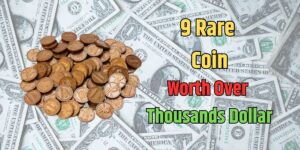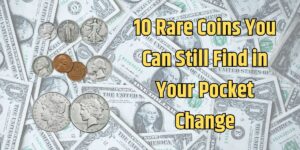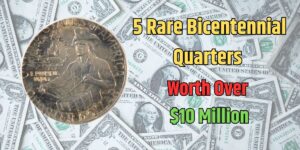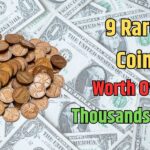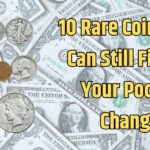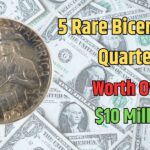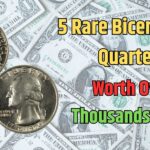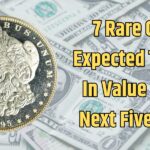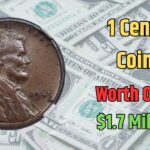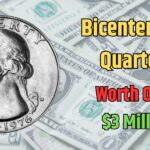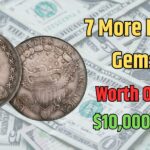Coins from the 1970s may seem ordinary at first glance, but some possess unique features or errors that make them highly valuable. With collectors eager to uncover hidden treasures, certain coins from this era have fetched over $10,000 at auctions. These valuable coins are sought after for their rarity, historical significance, and the fascinating stories behind their creation.
This article explores five coins from the 1970s that could be worth more than $10,000, delving into the details that set them apart and the factors contributing to their value.
Five 1970s Coins Worth More Than $10,000
| Coin Type | Unique Feature | Estimated Value |
|---|---|---|
| 1971-S Lincoln Cent | Double Die Obverse | $10,350 |
| 1974-S Lincoln Cent | 1973-S Brockage Error | Over $10,000 |
| 1979 Susan B. Anthony Dollar | Struck Over 1978 Jefferson Nickel | $15,000 |
| 1971-S Deep Cameo Proof Penny | Proof Finish, Deep Cameo | $17,000 |
| 1970-S Lincoln Cent | Small Date Variation | $18,000+ |
1. 1971-S Lincoln Cent with Double Die Obverse

The 1971-S Lincoln Cent is highly valued due to its double die obverse, a minting error where the die imprints twice, creating a distinct doubling effect on the coin’s design.
- Features: The doubling is most noticeable on Lincoln’s profile and the inscriptions.
- Value: Coins in excellent condition can sell for $10,350.
- Rarity: This type of error is rare due to rigorous quality control processes at mints.
Collectors prize these coins for their unique appearance, making them highly desirable.
2. 1974-S Lincoln Cent with 1973-S Brockage Error

The 1974-S Lincoln Cent features a remarkable brockage error, where one side of the coin shows a mirror image of another design.
- Features: This coin has a reverse impression of the 1973 Lincoln Cent design.
- Value: Specimens in mint condition can exceed $10,000.
- Significance: Such errors provide insight into the complexity of minting processes and are prized by numismatists.
This coin is an exceptional find, as brockage errors are among the rarest types of minting mistakes.
3. 1979 Susan B. Anthony Dollar Struck Over a 1978 Jefferson Nickel

The 1979 Susan B. Anthony Dollar, already a notable coin, becomes extraordinarily valuable when struck over a 1978 Jefferson Nickel due to a minting error.
- Features: The coin displays a mix of designs from both the Anthony Dollar and the Jefferson Nickel.
- Value: This unique combination has fetched $15,000 at auction.
- Rarity: Overstrike errors like this occur infrequently, enhancing their value significantly.
Collectors are captivated by the unusual blend of designs, making this coin a standout piece.
4. 1971-S Deep Cameo Proof Penny

The 1971-S Deep Cameo Proof Penny is a stunning example of precision minting, with a polished proof finish and deep cameo contrast.
- Features: Frosted details stand out sharply against a mirror-like background.
- Value: Pristine examples have been sold for $17,000.
- Significance: Proof coins are created for collectors, and deep cameo versions are even rarer.
This penny’s meticulous craftsmanship and scarcity make it a prized addition to any collection.
5. 1970-S Lincoln Cent with Small Date Variation

The 1970-S Lincoln Cent is notable for its small date variation, where the numerals in the date are subtly different from the standard version.
- Features: The smaller, more compact date distinguishes this coin.
- Value: Coins in exceptional condition can fetch $18,000 or more.
- Rarity: Variations like this are rare and highly sought after by collectors.
This coin highlights the importance of paying attention to minor details, as they can significantly increase a coin’s value.
What Makes Coins Valuable?
Several factors influence the value of a coin, including:
1. Rarity
- Coins produced in limited quantities or with unique features are often the most valuable.
- Minting errors, such as double strikes or overstrikes, are especially rare.
2. Condition
- Coins in pristine condition, graded as “uncirculated” or “proof,” fetch higher prices.
- Wear and damage can significantly reduce a coin’s value.
3. Demand
- Coins with historical significance or unique characteristics attract strong interest from collectors.
- High demand can drive up auction prices.
4. Errors and Variations
- Mistakes during the minting process, like brockage errors or overstrikes, make coins rare and valuable.
- Variations in design, such as the small date on the 1970-S Lincoln Cent, also add to a coin’s worth.
Tips for Identifying Valuable Coins
- Inspect for Errors: Look closely for doubling, overstrikes, or design anomalies.
- Assess Condition: Coins with minimal wear are more likely to be valuable.
- Research Rarity: Use numismatic guides and online resources to determine a coin’s rarity.
- Seek Expert Advice: Consult professional coin dealers or grading services for an accurate valuation.
Coins from the 1970s demonstrate how seemingly ordinary pieces of currency can hold extraordinary value. From minting errors to rare design variations, these coins are treasures hiding in plain sight. If you have old coins lying around, take a closer look—you might discover a piece worth thousands of dollars.
